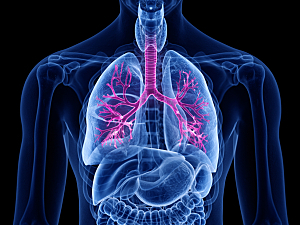The education of very senior surgical trainees receives much less attention than the training of junior learners. Senior residents and fellows generally have a high level of anatomical understanding and competence, but their surgical schedules can make it difficult to attend scheduled laboratory sessions. Tools for at-home practice would allow them to improve their skills even more.
M. Blair Marshall, MD, formerly the associate chief for quality and safety in the Division of Thoracic Surgery at Brigham and Women’s Hospital, Sue X. Wang, MD, a clinical fellow in the Division, Kate Kazlovich, MSc, of the Institute of Biomedical Engineering at the University of Toronto, and colleagues have developed and validated a portable model that helps trainees perfect complex vascular surgery and airway anastomosis techniques.
In the Journal of Surgical Education, the authors explain the model is inexpensive, has reusable and replaceable components, simulates procedures of increasing difficulty, and has higher fidelity to real tissues than earlier, more rudimentary bronchial models. It is the first model to simulate tracheal anastomosis.
Description of the Prototype
After several years of testing and innovation, the research group arrived at a simulation model consisting of:
- A plastic mounting box
- Four 3D-printed plastic supports are attached to suction cups so the model is stable during use
- Nine commercially available Penrose drain tubes (three sets of three standard sizes) were used to simulate the pulmonary artery
- Two silicone-molded tubes with rigid rings were used to simulate the trachea
- 12 mounting pegs of three different sizes to accommodate the different sizes of Penrose tubes and silicone components, including a set of pegs with a channel for performing a water tightness test on the vessel anastomosis
Validation Study Methods
10 senior thoracic surgery residents and fellows were asked to use the simulation box and complete an assessment questionnaire. After being instructed on end-to-end vascular anastomosis and bronchial anastomosis by an experienced lung transplant surgeon, they practiced for 20 minutes on a porcine model. They then practiced on the simulation box, receiving feedback from the expert surgeon throughout.
Validation Study Results
The trainees agreed the model was suitable for teaching advanced anastomosis techniques, expressed interest in using it for further practice, and said they would recommend it to colleagues. However, the Penrose material was not felt to be as similar to real tissue as desired; sutures had to be coated in mineral oil to ensure uninhibited suturing technique.
The silicone bronchus, conversely, proved to be remarkably like real tissue. The research group also found it was robust enough to be reused multiple times.
Next Steps
The team believes senior trainees need a higher-fidelity model, and they plan to find a different material for the simulated pulmonary artery and modify the simulated trachea manufacturing process. They will also conduct a comprehensive skill development training and assessment study to quantify the effectiveness of the proposed model for laboratory and take-home applications.
